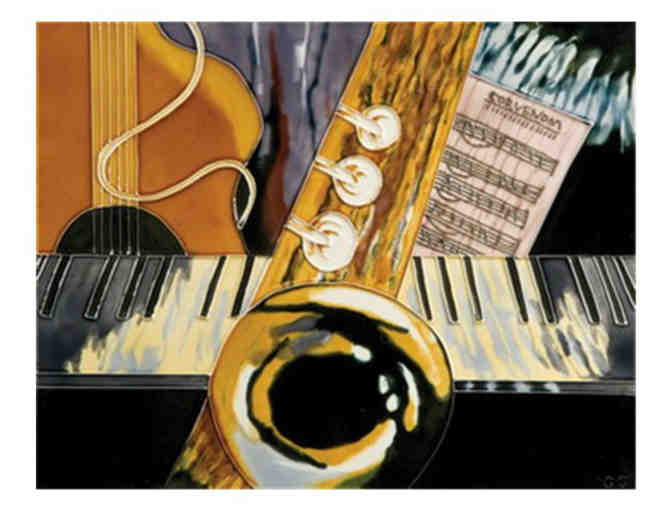Art & Antiques
Music Art Tile
- Item Number
- 254
- Estimated Value
- 68 USD
- Sold
- 25 USD to mvidy
- Number of Bids
- 2 - Bid History
Item Description
Set the tone with this eye-catching jazz instrument wall tile. An appealing wall accent for any music aficionado.
This gorgeous ceramic tile has been hand-crafted and hand-painted by specially trained artisans who form The Benaya Guild. The images and designs themselves are created by a team of visual artists who make up the design house.
Item Special Note
11" x 14"
Gary Giese, tile artist, is a contemporary Michigan artist with thirty years of commercial and line art experience. He is a master at rendering and is well known for his dimensionally vibrant images. The realistic feeling of tone and depth created by Giese evokes atmosphere and mood.
Gary works with the Benaya Guild. Benaya has been producing beautiful hand-painted Ceramic and Porcelain Art since 1998. For centuries, hand-painted Porcelain and Ceramics have been revered and collected by people of all walks of life and cultures. To appreciate the 'character' and 'human nuances' of hand-painted products, you need to know how they're made.
CRAZING is the most common occurrence in ceramic art. Consider the three stages that are required to craft each piece. (1) The raw clay (also called bisque) is shaped, the picture is drawn and raised tube lining hand applied. The product now goes through the first firing. (2) Hand painting is applied and the second firing takes place, during which, tiny bubbles may form in the glaze. Under the intense and prolonged heat of the kiln, slight color transference is possible. The colors, after this firing, appear dull. (3) It is now dipped in a glaze bath, left to dry and then fired for the third and final time. The result is that the brilliant colors and complex hues come to life. Thus the phrase commonly heard that hand-painted ceramics 'are alive'.
Each firing is done at a very high temperature, some reaching 1000 degrees Celsius. The construction of the clay material and the paint/glaze material are very different, and the varying temperatures (heating and cooling) cause minute amounts of shrinkage to the glazes and clay. All this contributes to some movement in these elements which results in 'Crazing' and color shifts. Extreme care is taken to match all of these properties, but to have them be 100% safe from crazing is near impossible. When does crazing occur? It could be hours after the final firing or months/years later. Considering that master craftspeople claim that these products are alive, 'crazing is to ceramics, like wrinkles are to humans', a characteristic that happens to all, but at different stages in their lives and with different intensity. Slight crazing on surface.
Winning bid does not include shipping or handling. Local winner may pick up item at Lawrence Academy of Music, 100 West Water Street, Appleton.
Lawrence Academy of Music stores data...
Your support matters, so Lawrence Academy of Music would like to use your information to keep in touch about things that may matter to you. If you choose to hear from Lawrence Academy of Music, we may contact you in the future about our ongoing efforts.
Your privacy is important to us, so Lawrence Academy of Music will keep your personal data secure and Lawrence Academy of Music will not use it for marketing communications which you have not agreed to receive. At any time, you may withdraw consent by emailing Privacy@frontstream.com or by contacting our Privacy Officer. Please see our Privacy Policy found here PrivacyPolicy.


